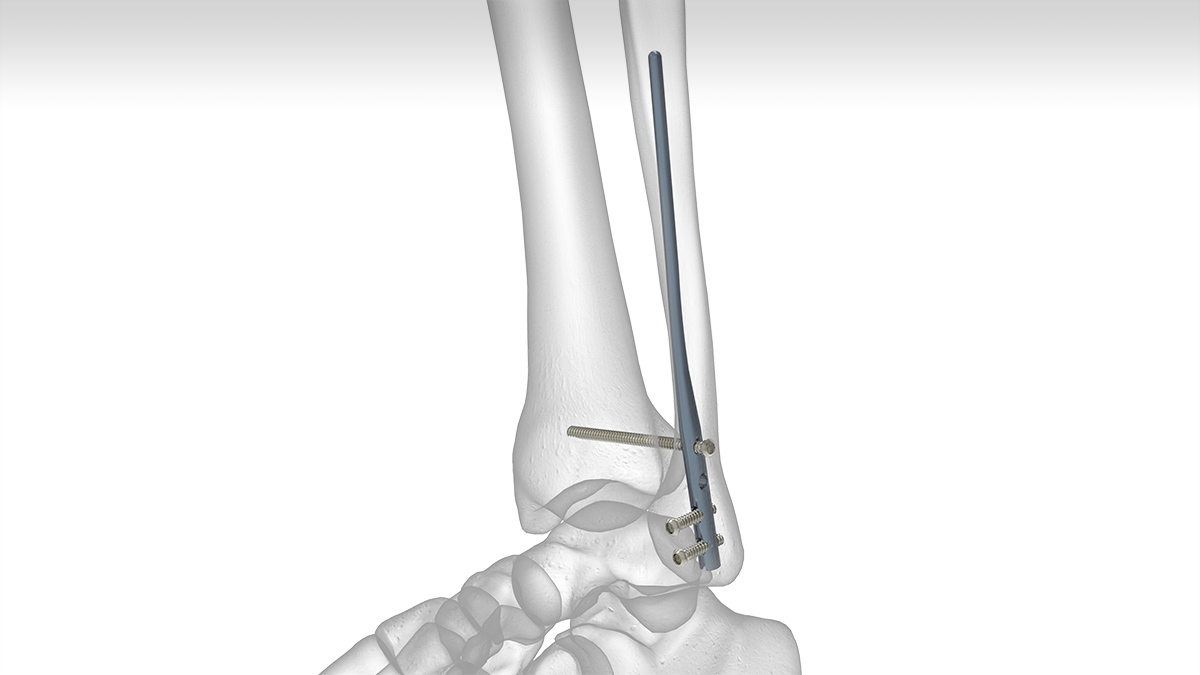An intramedullary nail, commonly known as an IM nail, is a surgical implant that is used to stabilize fractures of long bones such as the femur, tibia, and humerus. The intramedullary nail gets inserted inside the medullary cavity (hollow center) of the broken bone after reaming it out to allow space for the nail. Some key facts about intramedullary nails:
– Made of sturdy materials like stainless steel or titanium that can bear weight and help in fracture healing.
– Come in different sizes and designs to suit bones of different dimensions.
– IM nailing is considered a minimally invasive orthopedic procedure to treat fractures.
– Helps join the broken bone fragments through interlocking screws placed across the fracture.
– Allows early mobilization and weight bearing, resulting in faster recovery times compared to other fixation techniques.
In this article, we will discuss the procedure of intramedullary nailing, its advantages, limitations, and some common postoperative care aspects.
Procedure of Intramedullary Nailing
The insertion of an intramedullary nail involves the following key steps:
1. Anesthesia: The patient is administered general or regional anesthesia to keep them numb and comfortable during the procedure.
2. Incision: A small incision is made over the proximal (nearer to the body) aspect of the bone to access the medullary cavity.
3. Reaming: A rotating tool called a reamer is passed through the incision and medullary cavity to gradually widen it and create space for the nail.
4. Nail insertion: The appropriate sized IM nail is inserted through the incision and guided into the medullary cavity with the help of an X-ray machine.
5. Interlocking screws: Once in place, screws are drilled across the fracture site through the nail to hold the bone fragments securely.
6. Closure: The incision sites are closed with stitches or surgical staples. A sterile dressing is applied.
The entire procedure usually takes 1-2 hours depending on the complexities involved. The patient can be discharged within 2-5 days.
Advantages of Intramedullary Nail
Some key advantages of IM nailing over other fixation techniques include:
– Minimally invasive technique which causes less soft tissue damage and blood loss compared to plating.
– Load sharing capacity which allows early weight bearing and mobilization for faster recovery.
– Stable construction which provides excellent healing environment and structural support to the bone.
– Preserves blood supply to bone fragments by limiting soft tissue stripping helping fracture healing.
– Associated with fewer complications like non-union, infection etc. compared to external fixation techniques.
– Results in excellent functional outcomes and almost full mobility of the affected limb.
– Provides dynamic compression across the fracture site enhancing the consolidation process.
Limitations of Intramedullary Nailing
However, intramedullary nailing also has some limitations:
– Only suitable for selected fractures with proper bone geometry/anatomy.
– Risk of fat embolism syndrome from intramedullary reaming of the bone canal.
– Theoretical risk of infection due to instrumentation of the medullary cavity. However, modern sterile techniques have reduced this risk significantly.
– Technical difficulty in fractures with multiple or comminuted bone fragments requiring extensive experience in this technique.
– Possibility of damage to blood vessels, nerves during reaming/nailing increasing complication risks in some cases.
– Long term implant related issues like breakage, migration, backing out etc. requiring removal surgery.
Postoperative Care and Recovery
Some important aspects of postoperative care after intramedullary nailing include:
– Wound care and monitoring for signs of infection: Keep the incision clean and dry. Notify surgeon in case of increasing redness, swelling, pain or drainage from wound.
– Mobility and weight bearing: Assisted walking with crutches or walker usually starts the next day. Graduated weight bearing allowed as tolerated by the bone healing.
– Medications: Analgesics are prescribed for pain management. Antibiotics are given to prevent infections.
– Physiotherapy: Range-of-motion and muscle strengthening exercises are important to regain mobility and strength.
– Follow ups: Serial x-rays are done to monitor fracture healing. Stitches/staples are removed after 2 weeks. Full recovery takes around 3 months on average.
– Activity restrictions: Avoid bending, lifting for 6-8 weeks. Return to sports/heavy activities takes around 3-6 months depending on the bone involved.
Complications of Intramedullary Nailing
Like any other surgical procedure, intramedullary nailing also carries certain risks. Some common postoperative complications include:
– Infection: Occurs in around 1-2% of cases usually managed effectively with antibiotics. Deep infections may require implant removal.
– Delayed/Non-union: Up to 10% chance in complex fractures due to inadequate fracture stability or medical co-morbidities. Additional fixation/grafting may be needed.
– Implant failure: Around 5% risk of nail breakage or screw cut-out over time due to stress/strain across the fixation site.
– Fat embolism syndrome: Rarely seen (0.5-2%) but can be potentially fatal requiring intensive care support. More common after femoral nailing.
– Neurovascular injury: During reaming/nailing there is <1% risk of injury to blood vessels or nerves around the bone leading to deficit.
– Knee/hip irritation: In femoral/tibial IMN, implant prominence can cause soft tissue irritation leading to pain over the joints.
– Hardware related pain: Presents as discomfort at entry/exit points, across the implant and resolves gradually overtime or with implant removal.
*Note:
1.Source: Coherent Market Insights, Public sources, Desk research
2.We have leveraged AI tools to mine information and compile it


